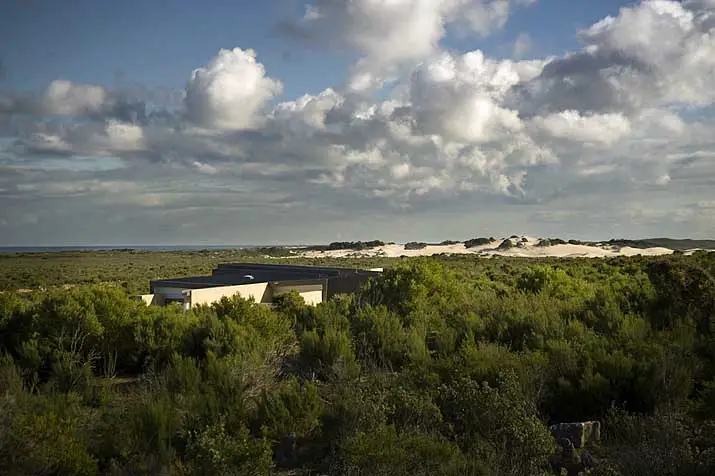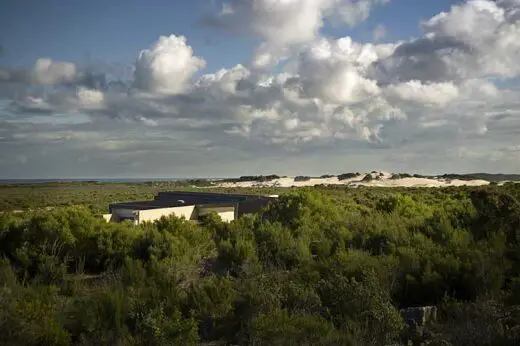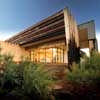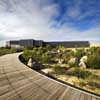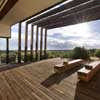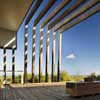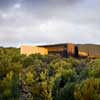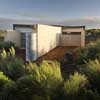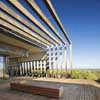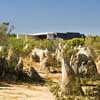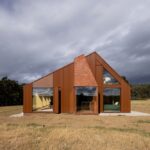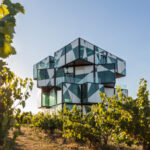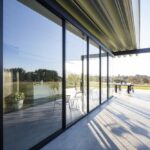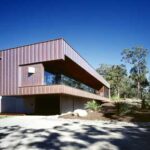Pinnacles Nambung National Park, Western Australia Building Photos, Architect, Architecture Design, Location
The Pinnacles Interpretative Centre : Architecture
Nambung National Park, Western Australia design by woodhead
23 Oct 2008
Location: Western Australia
Date: 2008
Architect: woodhead
Photographs: John Gollings Photography
Nambung National Park building
The Pinnacles Interpretative Centre
Challenging the Heroic
How does one ‘build’ in response to a shifting landscape? What happens when architecture considers itself a small component of a larger system, as opposed to a self-referential all-encompassing whole? The Interpretation Centre at the Pinnacles Desert in Western Australia deals explicitly with the these questions, resulting in a work that is consciously contradictory, non-heroic and embedded into a series of larger scale narratives about landscape, place and relationship.
The Pinnacles Desert, located in Western Australia 250km north of Perth in the Nambung National Park, consists of thousands of protruding limestone pinnacle formations spread over a vast dunal landscape. In the simplest terms possible, the rock formations are considered to be the exposed eroded remains of a formally thick bed of Tamala Limestone, which was formed over time with the combination of windblown sand and rain.
Although the Pinnacles would have taken thousands of years to form in this way, it is likely that they were exposed only quite recently, within the last few hundred years. In fact, the shifting processes of exposure can be seen in action on site today, with intense prevailing winds uncovering pinnacles in the northern part of the Desert whilst covering those in the south. Over time, the limestone protrusions will undoubtedly be covered and exposed again by further drifting sands. In this environment, footprints are swiftly erased.
On a primary level, the architectural interventions at The Pinnacles can be read as investigative parts of a landscape narrative, based on an underlying conviction of the fundamental importance of relationship to place. The materials used are specifically ‘of the place .The podium and the wall elements are constructed in limestone. Timber elements are direct references to the nearby grove of vanishing Tuarts that are disappearing under a shifting sand dune.
The processes involved in the built interventions work to further this embedded narrative. The configuration of the elements, as well as the emphasis on distinct stages of construction, directly relate to the forces at play in the landscape context. Stage 1 involved the complete construction of only the freestanding limestone walls, at which were then left to sit inconspicuously in the landscape as ‘ruins in reverse’.
At the completion of Stage 2, the vertical timber elements were deliberately set on fire. This act enabled the architecture to become a registration of the role of fire in the landscape, as well as an acceptance of a different kind of future; one which willingly accepts loss and change and highlights humanity’s vulnerable position in global balance.
This project deliberately favours shifting and multiple axis lines over a singular orientational logic, resulting in precarious spatial relationships. The configuration of the walls creates open-ended opportunities for enclosure, rather than clear-cut pockets of space, and material elements both fragment and overlap to emphasise the shifting focal points. Further to this, conscious moves have been made to counter the typical scenic conventions that play out in buildings of a ‘landscape setting’.
Entry into the main building, off the jetty-like boardwalk, is through the side and the culminating orientation from the deck directly adjacent to the retail space, embraces the view towards the aforementioned disappearing grove of Tuarts, rather than the ocean panorama to the west. In these ways, the building can be understood as a marker of a shift in architectural response to landscape as a process of understanding place.
Dialogue about architecture too often focuses on the ‘completed’ building as a finished and finessed sum of its parts. It is not surprising, therefore, that discussions often tend toward an illusory understanding of the fait accompli of a built form. This building, attempts to interrogate such conventions by valuing process and journey over a monocular understanding of architecture as finished form. Read in this way, the architectural interventions at The Pinnacles become a series of exercises in not being precious, of “roughing it up”, and of making explicit the contradictions.
The Pinnacles Interpretative Centre – Building Information
Project Architect: John Nichols
Other Project Team: John-Paul Davies
Pinnacles Interpretive Centre, Pinnacles Drive, via Nambung National Park
240km North of Perth / 17km South of Cervantes, Western Australia
Project Completion: 18 Apr 2008
The Pinnacles Interpretative Centre images / information from woodhead 231008
Location: The Pinnacles, Nambung National Park, Australia
Australian Architecture Designs
Australian Architectural Designs
Architecture: TPG Architects

photograph : Andrew Watson Photography
Newman Catholic College
Architecture: TPG Architects
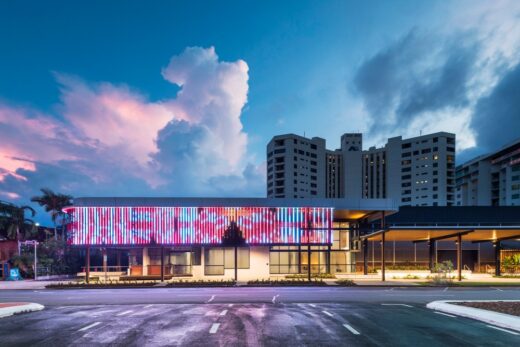
photograph : Andrew Watson Photography
Bulmba-ja Centre of Contemporary Art, North Queensland
Architecture in Australia
World Architecture Festival Awards 2008 – Culture Category Finalist
woodhead are based in North Sydney NSW 2060
Comments for The Pinnacles Interpretative Centre Australia design by woodhead page welcome

